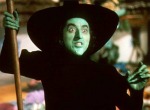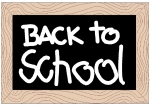Lewis Carroll (Rev, Charles Dodgson) brought immortality to Alice Liddell, (surname rhymes with little), the 5-year-old daughter of his neighbours, the Liddells, although while alive, Dodgson denied the story was about the child. Poppycock. There is ample evidence that Alice Liddell is the Alice character:
- the very name Alice
- her age
- Dodgson’s possible obsession with Alice Liddell
Although Dodgson had relationships with many little girls, Alice Liddell was a favourite. In Alice Through the Looking-Glass, the sequel to Alice in Wonderland, Dodgson himself appears with Alice as the character of the White Knight in Chapter 8. Years afterwa rds she could bring the whole scene back again, as if it had been only yesterday — the mild blue eyes and kindly smile of the Knight — the setting sun gleaming through his hair, and shining on his armour in a blaze of light that quite dazzled her. The Knight is awkward with his crush on Alice, and he shows a wistful remorse when Alice crosses a river toward womanhood, leaving her White Knight behind `You’ve only a few yards to go,’ he said,’ down the hill and over that little brook, and then you’ll be a Queen – -But you’ll stay and see me off first?’ he added as Alice turned with an eager look in the direction to which he pointed. `I shan’t be long. You’ll wait and wave your handkerchief when I get to that turn in the road? I think it’ll encourage me, you see.’ Dodgson pens in his own words that he is the sorrowful Knight when Alice reaches sexual maturation:
rds she could bring the whole scene back again, as if it had been only yesterday — the mild blue eyes and kindly smile of the Knight — the setting sun gleaming through his hair, and shining on his armour in a blaze of light that quite dazzled her. The Knight is awkward with his crush on Alice, and he shows a wistful remorse when Alice crosses a river toward womanhood, leaving her White Knight behind `You’ve only a few yards to go,’ he said,’ down the hill and over that little brook, and then you’ll be a Queen – -But you’ll stay and see me off first?’ he added as Alice turned with an eager look in the direction to which he pointed. `I shan’t be long. You’ll wait and wave your handkerchief when I get to that turn in the road? I think it’ll encourage me, you see.’ Dodgson pens in his own words that he is the sorrowful Knight when Alice reaches sexual maturation:
`Well, this is grand!’ said Alice. `I never expected I should be a Queen so soon. So she got up and walked about — rather stiffly just at first, as she was afraid that the crown might come off: but she comforted herself with the thought that there was nobody to see her, `and if I really am a Queen,’ she said as she sat down again, `I shall be able to manage it quite well in time.’
In fact, the tone of the whole book is very melancholy, especially when compared to its predecessor, Alice in Wonderland. Looking-Glass is prefaced by an extremely sad poem which reflects Dodgson’s own feelings about his young child-friends growing up and entering the adult world.
Dodgson’s controversial relationships with little girls have been debated for decades. It was known that Dodgson had a preference for little girls: he thought the bodies of little girls to be very be autiful, but that of little boys to be ugly. He photographed little girls in provocative clothing, or completely nude, with their parents’ permission. Today we call that child pornography. That these parents gave a grown man permission to photograph their child naked suggests how solid a relationship Dodgson formed with them before the photograph sessions. Although Dodgson did photograph men, women, and landscapes, over fifty percent of Dodgson’s remaining photos depict young girls. One study has attempted to place Dodgson’s child-photography within the “Victorian Child Cult“, which perceived child-nudity as an expression of innocence. Studies of child nudes were fashionable in Dodgson’s time. Child nudes appeared on Victorian Christmas cards. It may be an error to view Dodgson’s child-photography with 20th- or 21st-century eyes, when it was in fact a prevalent mentality of the time. Eesh. Women can’t bare their ankles, they cannot be alone with a man, they must have a chaperone at all times, they are terrified of becoming involved in a “scandal”, but child porn is okay with these people. Something’s going wrong around here.
autiful, but that of little boys to be ugly. He photographed little girls in provocative clothing, or completely nude, with their parents’ permission. Today we call that child pornography. That these parents gave a grown man permission to photograph their child naked suggests how solid a relationship Dodgson formed with them before the photograph sessions. Although Dodgson did photograph men, women, and landscapes, over fifty percent of Dodgson’s remaining photos depict young girls. One study has attempted to place Dodgson’s child-photography within the “Victorian Child Cult“, which perceived child-nudity as an expression of innocence. Studies of child nudes were fashionable in Dodgson’s time. Child nudes appeared on Victorian Christmas cards. It may be an error to view Dodgson’s child-photography with 20th- or 21st-century eyes, when it was in fact a prevalent mentality of the time. Eesh. Women can’t bare their ankles, they cannot be alone with a man, they must have a chaperone at all times, they are terrified of becoming involved in a “scandal”, but child porn is okay with these people. Something’s going wrong around here.
Dodgson’s behaviour however was an oddity: he became involved in several scandalous relationships with married and single women. Many of the friends he described as “child-friends” were girls in their late teens and twenties. Accusations of pedophilia only arose years after his death. His well-meaning family suppressed evidence of his relationships with women to protect his reputation, but this gave the impression of a man interested only in little girls. Yet again Dodgson contradicts himself since many of his female friendships ended when the girls reached the age of fourteen. His lack of interest in pursuing relationships with most of his child-friends after 14, may have been his own, or that of the girls, whose parents may have discouraged the friendships to avoid scandal. This was the Victorian Age, after all. Nude children were the norm, but teenagers having chaperoned visits with adult friends was highly discouraged. It amazes me that anyone living in the Victorian Era could navigate social norms through a paper bag.
girls in their late teens and twenties. Accusations of pedophilia only arose years after his death. His well-meaning family suppressed evidence of his relationships with women to protect his reputation, but this gave the impression of a man interested only in little girls. Yet again Dodgson contradicts himself since many of his female friendships ended when the girls reached the age of fourteen. His lack of interest in pursuing relationships with most of his child-friends after 14, may have been his own, or that of the girls, whose parents may have discouraged the friendships to avoid scandal. This was the Victorian Age, after all. Nude children were the norm, but teenagers having chaperoned visits with adult friends was highly discouraged. It amazes me that anyone living in the Victorian Era could navigate social norms through a paper bag.
Alice-in-Wonderland syndrome (AIWS), also known as Todd’s syndrome or lilliputian hallucinations, originate from Dodgson’s changes in sha pe and size of a child entering into adulthood. He also emphasizes the time in the years that this transition takes place: at first the years seem to pass slowly in Looking-Glass then suddenly Alice is Queen. Todd’s Syndrome is a neurological condition that affects human perception. The sufferer may lose a sense of time; time seems to pass very slowly, akin to an LSD experience. The lack of time and space leads to a distorted sense of velocity: a person could be inching along slowly, yet to the sufferer, it seems that s/he is sprinting uncontrollably along a moving walkway, leading to severe, overwhelming disorientation. There are many references to hallucinatory drugs in Alice in Wonderland: The caterpillar who is smoking pot from a hookah, sits atop a “magic” mushroom that changes the size of the person who eats it. Alice drinks and eats several foods that cause her to grow, shrink and suffer distortions to her body.
pe and size of a child entering into adulthood. He also emphasizes the time in the years that this transition takes place: at first the years seem to pass slowly in Looking-Glass then suddenly Alice is Queen. Todd’s Syndrome is a neurological condition that affects human perception. The sufferer may lose a sense of time; time seems to pass very slowly, akin to an LSD experience. The lack of time and space leads to a distorted sense of velocity: a person could be inching along slowly, yet to the sufferer, it seems that s/he is sprinting uncontrollably along a moving walkway, leading to severe, overwhelming disorientation. There are many references to hallucinatory drugs in Alice in Wonderland: The caterpillar who is smoking pot from a hookah, sits atop a “magic” mushroom that changes the size of the person who eats it. Alice drinks and eats several foods that cause her to grow, shrink and suffer distortions to her body.
AWIS sufferers also experience size distortion often associated with migraines, brain tumors, and the use of psychoactive drugs. A disturbing symptom is altered body image: the sufferer may find that he or she is confused as to the size and shape of parts of his/her body. This temporar y condition is not to be confused with BDD or Body Dysmorphic Disorder, which is lifelong and highly debilitating. AIWS involves perceptual distortions of the size or shape of objects. These hallucinations are called “Lilliputian,” which means that objects appear either smaller or larger than they actually are. Some authors have suggested that Dodgson may have suffered from a form of AIWS and used it as an inspiration in his work, but there is no evidence that he did. There has been the suggestion that Dodgson may have suffered from epilepsy, but again there is no evidence to prove it.
y condition is not to be confused with BDD or Body Dysmorphic Disorder, which is lifelong and highly debilitating. AIWS involves perceptual distortions of the size or shape of objects. These hallucinations are called “Lilliputian,” which means that objects appear either smaller or larger than they actually are. Some authors have suggested that Dodgson may have suffered from a form of AIWS and used it as an inspiration in his work, but there is no evidence that he did. There has been the suggestion that Dodgson may have suffered from epilepsy, but again there is no evidence to prove it.
By the time the book was published, Alice was 19 and Dodgson didn’t see her often. He sent three copies of Alice Through the Looking-Glass to the Liddell family, a melancholy, cryptic message to the grown Alice Liddell contained within.
















